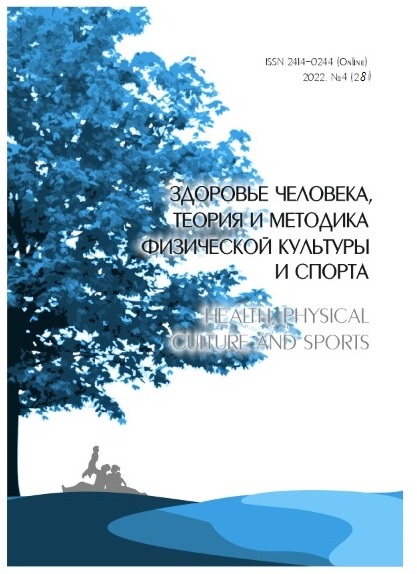EPONYMIZATION OF LITERARY AND MYTHOLOGICAL CHARACTERS IN ENGLISH, RUSSIAN AND BULGARIAN MEDICAL DOMAIN
Abstract
Objectives: to make a brief overview of the recent cognitive theoretical proposal by Pamela Faber - Frame - based Terminology Theory (FBTT); to determine the specificity, positive/ negative aspects and functions of medical eponymous term; to demonstrate eponymous terms variety in medical domain basing on English/Russian/Bulgarian examples (names of literary characters and mythological heroes) and focusing on the semantic information they convey; to apply the study results in foreign language terminological training at medical universities. Materials and research methods. Twenty-four (24) compound eponyms in English, Russian and Bulgarian medical academic languages have been excerpted and discussed applying the methods of definition analysis, conceptual integration, cognitive analysis, eponymous modelling, etymological analysis. Discussion and results of the study. Terminology is viewed as what we think about, the way we link things and consider them, the way we organize the world around us. Categorization is indicated as a key point in the study of life and science, respectively terminology. The considered medical eponymous terminological units debated in the current study denote mental or neurological disorders and syndromes. Medical description and brief information about the character whose name is immortalized has been suggested in respect of each eponym. Both processes of eponymization and de-eponymization have been considered. Positive and negative aspects of eponymous term have been laid out. Eponym is seen as a “carrier” of nomination, expressiveness, immortalization and specialized knowledge with encyclopedic informative value. Conclusions. The following conclusions have been made: 1. Terminology should be thought about and learnt by means of categories. 2. The process of eponymization marks turning proper nouns into common nouns. 3. Nominative, expressive, memorial and informative are the four basic functions attributed to eponymous medical term. 4. Difficult pronunciation, low derivational valence, incomplete concept representation, presence of homonyms and spelling variants are the negative aspects of eponymous medical term. 5. The process of de-eponymizing medical terminology has started. 6. Various diseases, syndromes, symptoms are denoted by medical eponyms. 7. Medical eponyms serve as “carriers” of specialized knowledge with a high encyclopedic informative value.
Downloads
References
Superanskaya A. V., Podol'skaya N. V. & Vasil'yeva N. V. Obshchaya terminologiya: Voprosy teorii. M.: Yeditorial KHRSS. 2003. p. 114 (in Russian).
Faber, P. et al. A Cognitive Linguistics View of Terminology and Specialized Language. Berlin: De Gruyter Mouton, 2012. p. 191.
Faber, P., Márquez Linares, C. & Vega Exposito. Framing terminology: a process-oriented approach. M: META 50 (4): CD-ROM, 2005.
Faber, P., et al. Process-oriented terminology management in the domain of coastal engineering. Terminology 12 (2). M: 2006. pp.189-213.
Faber, P., et al. Linking images and words: the description of specialized concepts. International Journal of Lexicography 20: 2007. pp.39-65.
Fillmore, C. J. The need for frame semantics within linguistics. Statistical Methods in Linguistics. 12: 1976. pp. 5-29.
Fillmore, C. J. Frame semantics. In the Linguistic Society of Korea (ed.) Linguistics in the Morning Calm. Seoul: Hanshin, 1982. pp. 111-137.
Fillmore, C. J. Frames and the semantics of understanding. Quaderni di Semántica. 6 (2): 1985. pp. 222-254.
Fillmore, C. J. & Atkins, S. Towards a frame-based organization of the lexicon: The semantics of RISK and its neighbors. In A. Lehrer and E. Kittay (eds.). Frames, Fields, and Contrast: New Essays in Semantics and Lexical Organization. Hillsdale: Lawrence Erlbaum, 1992. pp. 75-102.
Fillmore, C. J., Johnson, C. R. & Petruck, M. R. L. Background to Framenet International Journal of Lexicography. 16(3): 2003. pp. 235–250. https://doi.org/10.1093/ijl/16.3.235
Segen, J. C. Current Med Talk: A Dictionary of Medical Terms, Slang & Jargon. New York: Appleton & Lange, 1995. p. 6.
An author should not normally publish manuscripts describing essentially the same research in multiple journals or publication venues. Such redundant publication is generally considered to constitute unethical publishing behavior, and if discovered may result in a manuscript under consideration being rejected, or a published article being retracted.
Authors of manuscripts reporting on original research should present an accurate account of the work performed, accompanied by an objective discussion of its significance. Underlying data should be represented accurately in the manuscript. The manuscript should contain sufficient detail and references to permit others to replicate the work. The fabrication of results and the making of fraudulent or knowingly inaccurate statements constitute unethical behavior and may be cause for rejection or retraction of a manuscript or published article.





